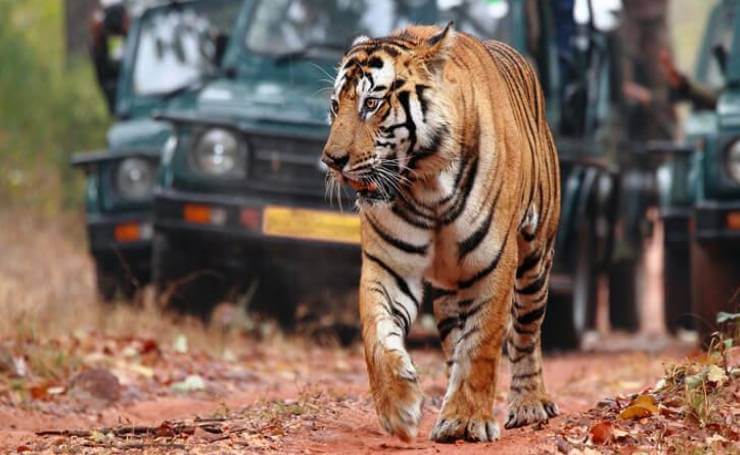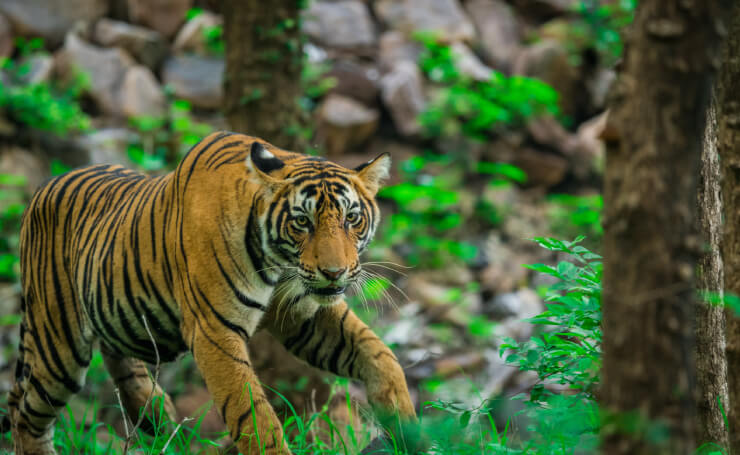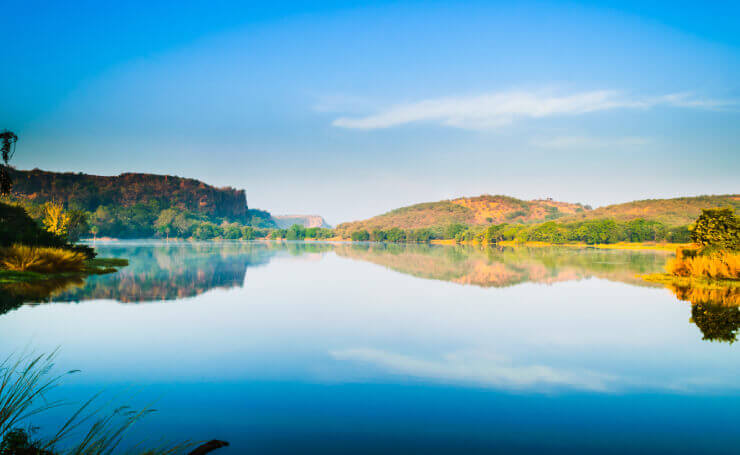Here are nine interesting facts about Ranthambore National Park

- Hunting reserves for Britishers and Rajput
- Hunting banned under Wildlife (Protection) Act
- Hot Air Ballooning Ranthambore National Park
- National Park in 1980
- Three Big Lakes
- Animals at the Ranthambore National Park
- Largest Banyan Tree
- Bird Watcher Paradise
- Famous Tigress Fish (T-16)
Hunting Reserves for Britishers and Rajput

During the 1820s, the Rajputs and the British together used the Ranthambore forests as their private hunting reserves. It is estimated that from 1929 to 1939, a total of 1,074 tigers were hunted in the forests of Rajasthan.
On 26 January 1961, Queen Elizabeth II of England and HRH Dyuk Prince Philip of Edinburgh visited the forests of Ranthambore on a royal hunt.
A fully-grown adult tiger was shot dead by Prince Philip at Ranthambore during the visit of the then Maharaja of Jaipur to the guest Sai.
Other Interesting Blog to Read
Hunting Banned Under Wildlife (Protection) Act

One of the most interesting facts about Ranthambore national Park is that Tiger hunting was completely banned by the Government of India by 1971, the Wildlife (Protection) Act was enacted in 1972. It is estimated that from 1929 to 1939, a total of 1,074 tigers were hunted in the forests of Rajasthan. In 1973, Project Tiger was started and the Sawai Madhopur Wildlife Sanctuary was incorporated as “Ranthambore Tiger Reserve”. There were 9 Tiger Reserves under Project Tiger Reserve.
Other Interesting Blog to Read
Hot Air Ballooning Ranthambore National Park
This exciting activity is completely run by private institutions, it can be a good option for tourists visiting Ranthambore Tiger Reserve. Seeing the beauty and wildlife of this national park from the sky can be a different experience.
Other Interesting Blog to Read
National Park in 1980

The shrinking forest cover and wildlife in the country forced the government to pay attention to this growing problem and thus the Ranthambore National Park was created to protect the remaining forests and wild inhabitants of the forests by making them reserve forests and national parks. Ranthambore national park was declared a life sanctuary in 1957 and 74 it gained the protection of “Project Tiger”. Ranthambore Wildlife Sanctuary has bestowed the status of a national park in 1980.
Other Interesting Blog to Read
Three Big Lakes

There are three big lakes in the Ranthambore National Park which will definitely make your Ranthambore sightseeing tour more interesting i.e.; Padam Talao, Malik Talao and Raj Bagh that are spread with aquatic vegetation including duckweeds, lilies and lotus. Padam Talao is the largest of the many lakes located in the park.
Other Interesting Blog to Read
Animals at the Ranthambore National Park
Apart from tigers, the national park is a natural habitat for many wild animals, jackals, cheetahs, hyenas, swamp crocodiles, wild boars and various varieties of deer. Also, there is aquatic vegetation such as lilies, Duckweed and lotus that are abundant in the park. The best way to enjoy and explore the wilderness is Tiger Jeep Safari in Ranthambore National Park.
Other Interesting Blog to Read
Largest Banyan Tree
This amazing fact about Ranthambore National Park will definitely amaze you. A large number of banyan trees are seen in three kilometers spread over 392 square kilometers. The second-largest banyan tree in India is located in Ranthambore National Park, near Padam Talab, one of the park’s largest lakes.
Also Read: Wildlife of India: National Parks, Wildlife & Bird Sanctuaries
Bird Watcher Paradise
According to a survey, a total of 35 320 species of birds (including migratory) are found in this park.
The park is a popular spot and paradise for bird watchers, apart from attracting tourists from all over the world due to its habitat of tigers. It is surely one of the best places to enjoy wildlife in India.
Other Interesting Blog to Read
Famous Tigress Fish (T-16)
Machali (T-16) was born in 1997 in the month of monsoon, this tigress had a fish-shaped mark on its left side.
The fish began hunting at the age of 2 and took over the juhonouredion of its mother.
There are also some world records in the name of fish, such as a tiger can occupy an area for an average of 7-8 years, but the fish was the only tigress in the world that ruled the forests of Ranthambore National Park for 10-15 years.
The fish has also been given various nicknames such as “The Lady of the Lake”, “The Lady of the Lake” and “Crocodile Killer”.
Between 1998 and 2009, the government of India earned US $ 100 million with the help of fish. The honored men of India also honored the fish with the “Lifetime Achievement Award” “Lifetime Achievement Award” for its contribution to tourism and conservation of the forest.
We hope that this blog will enlighten you with interesting facts and amazed your curiosity to a point where you are ready to visit Ranthambore Tiger Reserve.
If you are travelling to visit Ranthambore Tiger Reserve also, then you have to keep in mind that Ranthambore Wildlife Sanctuary remains closed during the monsoon season, after that it remains open from October to June.
Other Similar Interesting Blogs to Read

 +91-9212777225
+91-9212777225 Plan Your trip
Plan Your trip




























